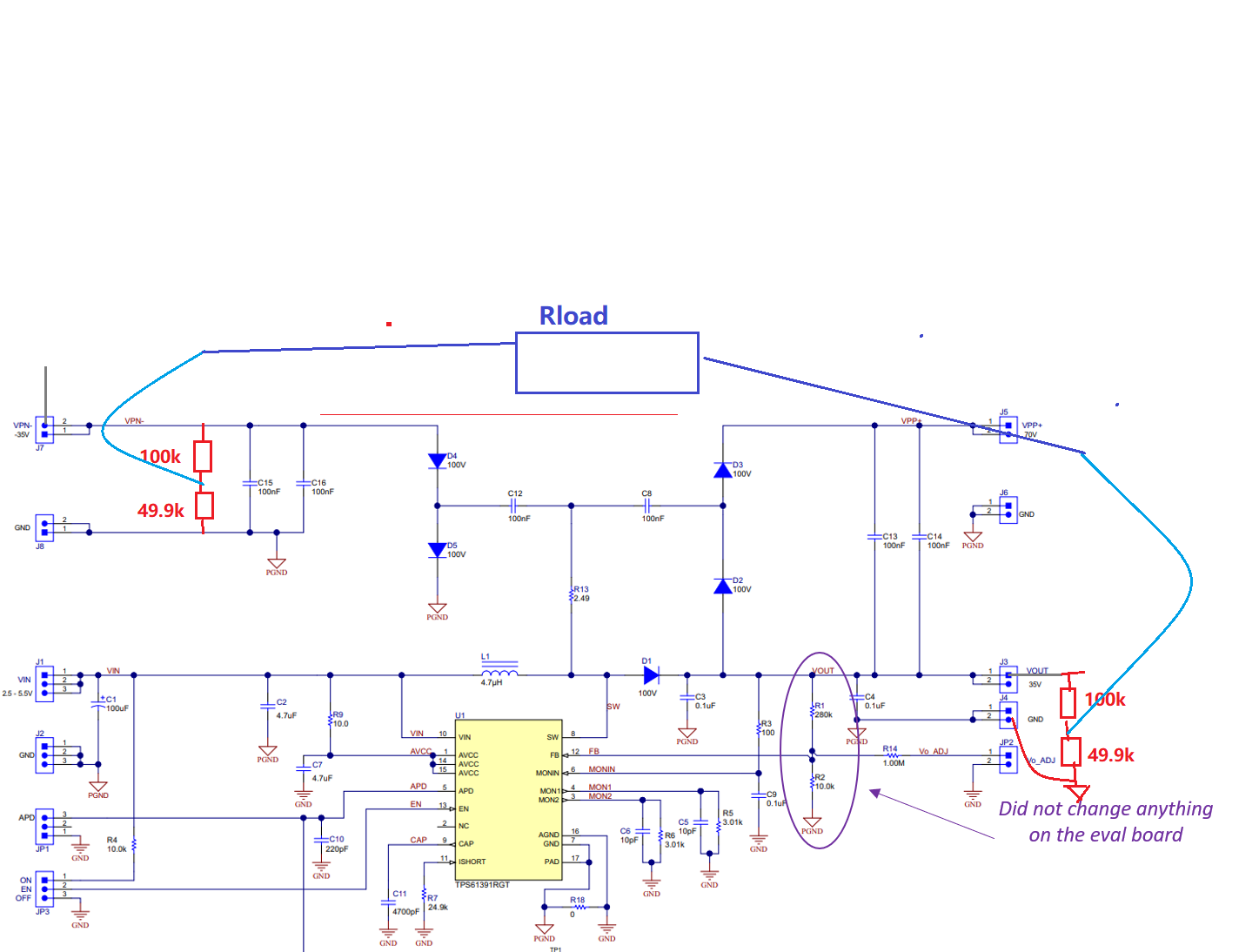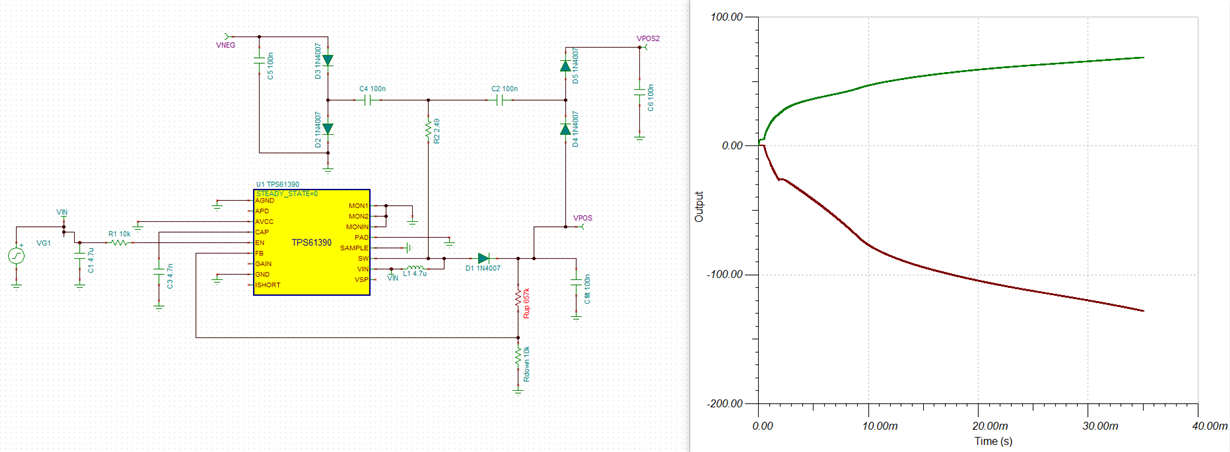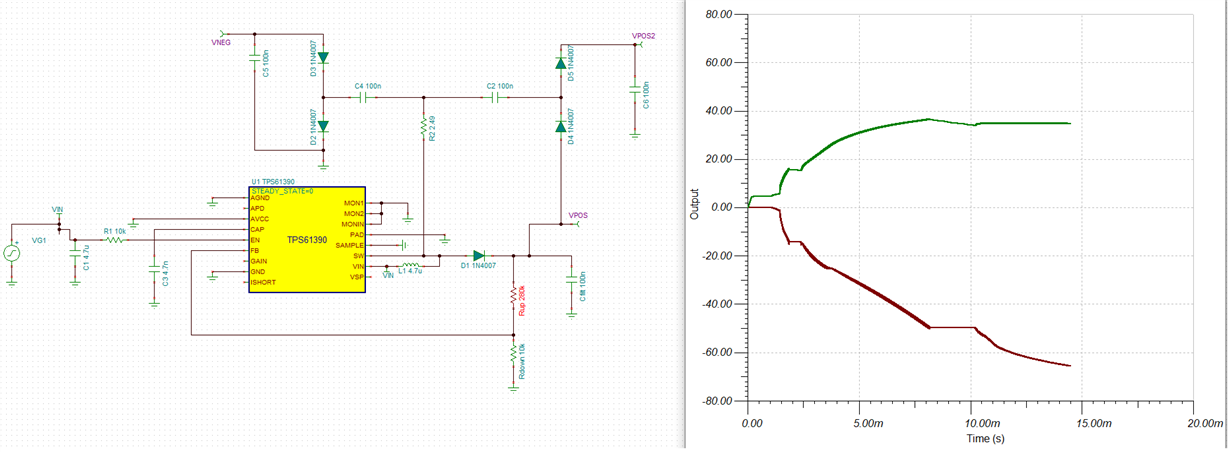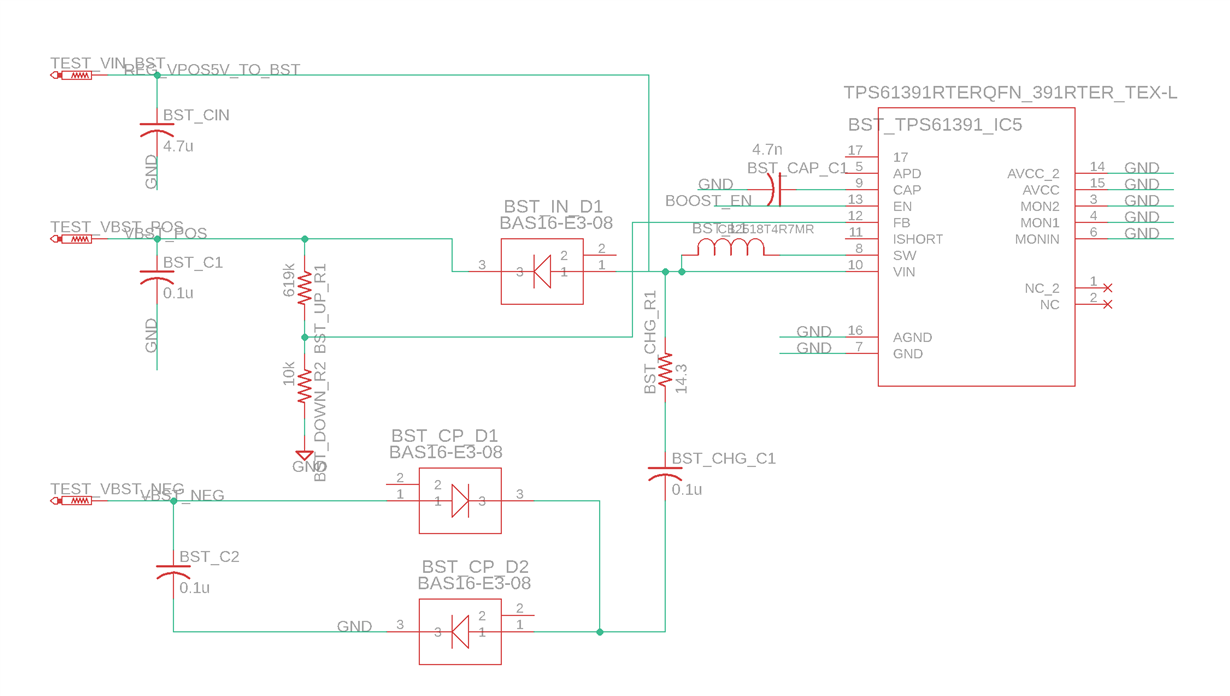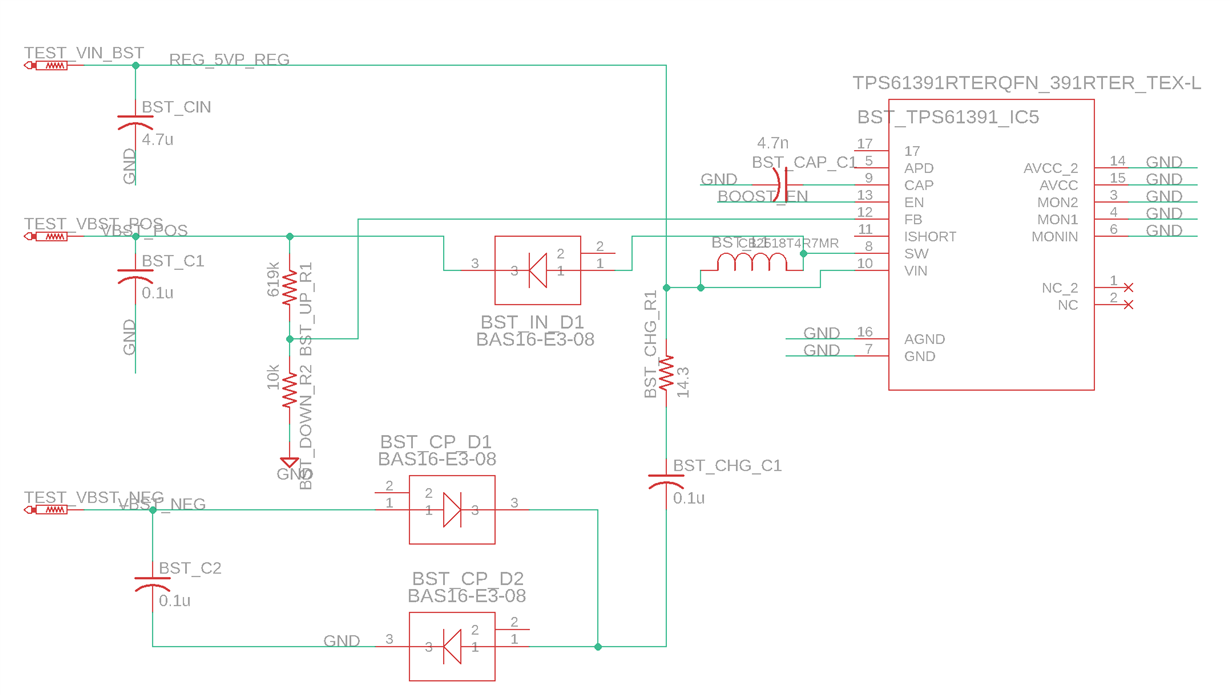Other Parts Discussed in Thread: TPS61391, OP07, TINA-TI, TPS61390, TPS65132, TPS65133, TLV751
Hello there,
I am evaluating the TPS61391 boost converter with the corresponding evaluation module. I am using the boost converter to supply high voltage compliance power rails to an op-amp based V-to-I converter. WIth the resources I have on hand, here is what I did:
1. I am using the OP07 op-amp.
2. The boost converter EVM is powered by 5V supplied through a USB+ voltage regulator.
3. On the EVM, I have stepped down about a third of the voltage as supply to the OP01. The +35V (from VOUT) to +11.6V and the -35V (from VPN-) to -11.6
4. I connect the V+ and V- of the op-amp accordingly to +11.6V and -11.6V.
Here is my issue:
As soon as I connect the power rails from the stepped-down boost converter to the op-amp and measure the power supply pins of the op-amp - it reads a much lower voltage than +/- 11.6V, for my V-to-I circuit, it measures +/-4V.
To double check, I connected a 33k resistor across the +11.6V and -11.6V, the voltage at those pins now read +10.6 and -9.3V instead.
I would like to understand what is happening here, an op-amp shouldn't be loading down a boost converter designed to supply 1000mA, let me know if I should be doing something differently.
Thanks!
Ashwati





